A common practice in Japan is visiting a sento, or a Japanese bathhouse, to get away from the hustle and bustle of everyday life. Not only is the experience incredibly relaxing, but many sentos in Japan are nestled in some of the most interesting neighborhoods of Japan.
There are some things to know about how to properly indulge in a sento experience in Japan, considering these baths are open to the public and tend to be communal baths for the most part.
What Exactly Is A Sento?
Japanese bathhouses once served a more practical purpose, before plumbing became common in Japanese homes. Many homes were not fortunate enough to have their own private bath, and so they had no choice but to use a sento.
These baths will often have barriers to separate genders, though you don’t really see anything in a sento anyway.
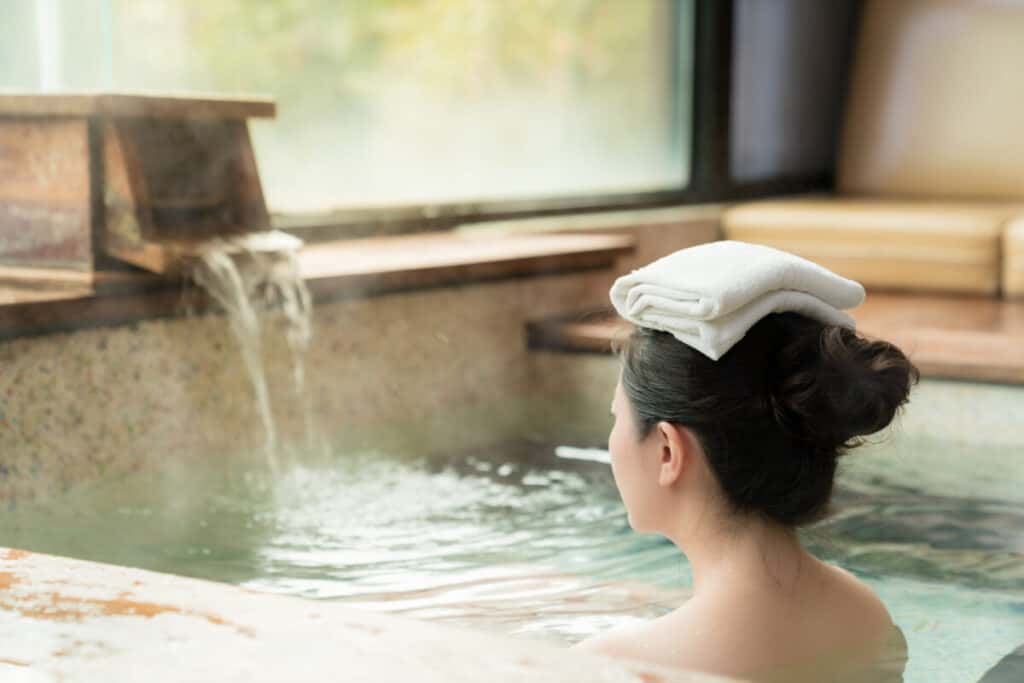
While some might worry about how hygienic it is to use a communal bath, keep in mind that it has always been customary to shower before entering the bath.
There are rules of how to use a sento properly so that you do not offend or disturb anyone else using it.
What Is The Significance Of A Sento To Japanese Culture?
Sento baths have existed in Japan for centuries, and their origins can be traced back to Buddhist rituals. They used to be found mainly in Buddhist temples, but sometimes wealthy people would have baths in their homes.
Over the years, bathhouses would become more popular establishments accessible to all people.
Wars and natural disasters would repeatedly destroy existing bathhouses, leading builders to experiment with different materials.
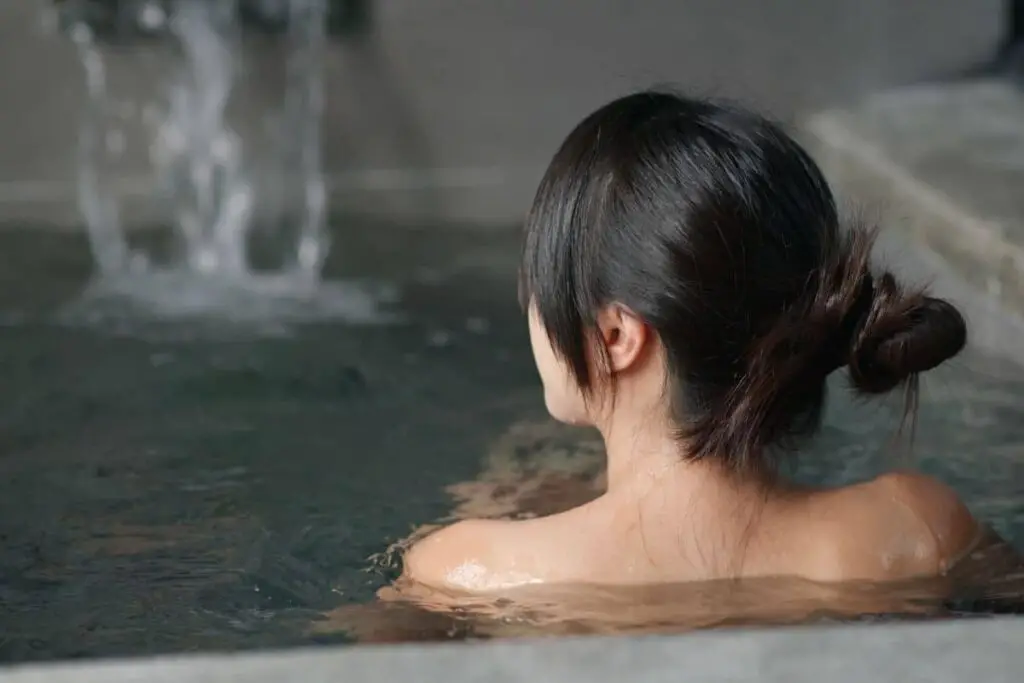
After the Second World War, with people not having access to private baths in their homes, bathhouses saw another resurgence in popularity.
There aren’t as many bathhouses in Japan as there used to be with nearly all homes having their own baths now. There is also more of a taboo about nudity than there once was.
Bathhouses that are being built today are sometimes erected in scenic areas to offer a relaxing experience with a view.
What To Bring To A Sento
As you are expected to wash before entering a sento, you should bring along your own toiletries such as soap, shampoo, and a towel. However, if you manage to forget these items, you can usually purchase them at the sento.
Entering A Sento
The entrance to a sento could vary depending on the location you go to. There is a front entrance where everyone enters and passes the reception to two separate paths for men and women.
There are also the bandai entrances, with men and women having a separate entrance and one reception area.
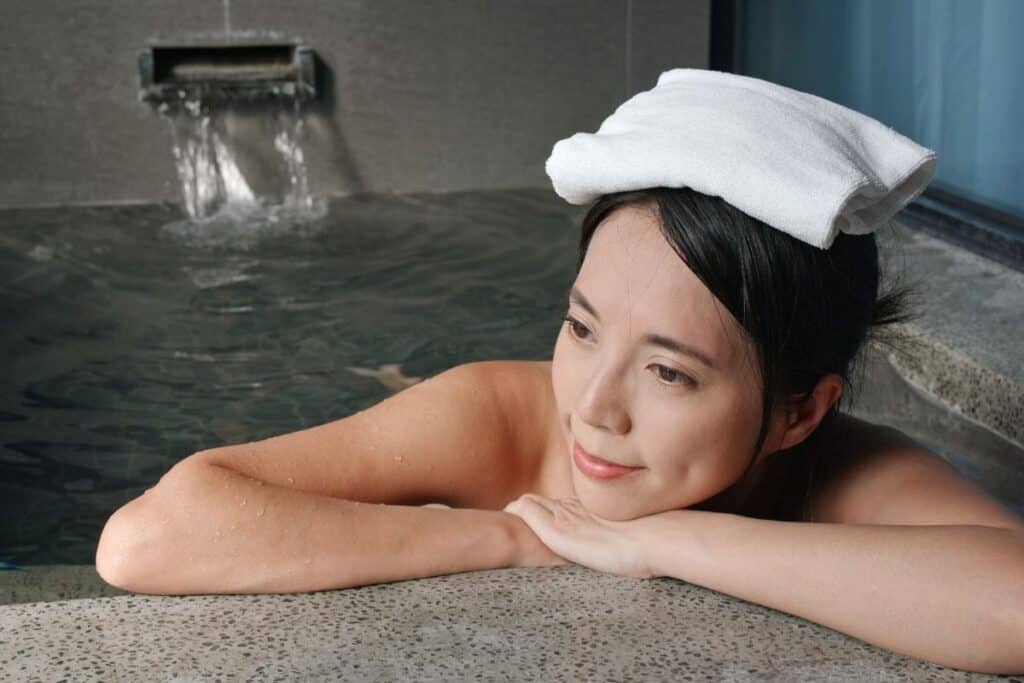
There are usually noren, or a curtain, that will tell you which path is for men or women. The men’s is usually blue, and the women’s are usually red or pink.
You should also be sure to remove your shoes as soon as you enter the sento facility. You can store them away, but wearing them into the building after you enter is not allowed.
The Cost To Enjoy A Sento
It is fairly inexpensive to enjoy a sento experience. Prices will obviously vary depending on where you go, but you are probably looking at a couple of hundred yen to a few hundred yen.
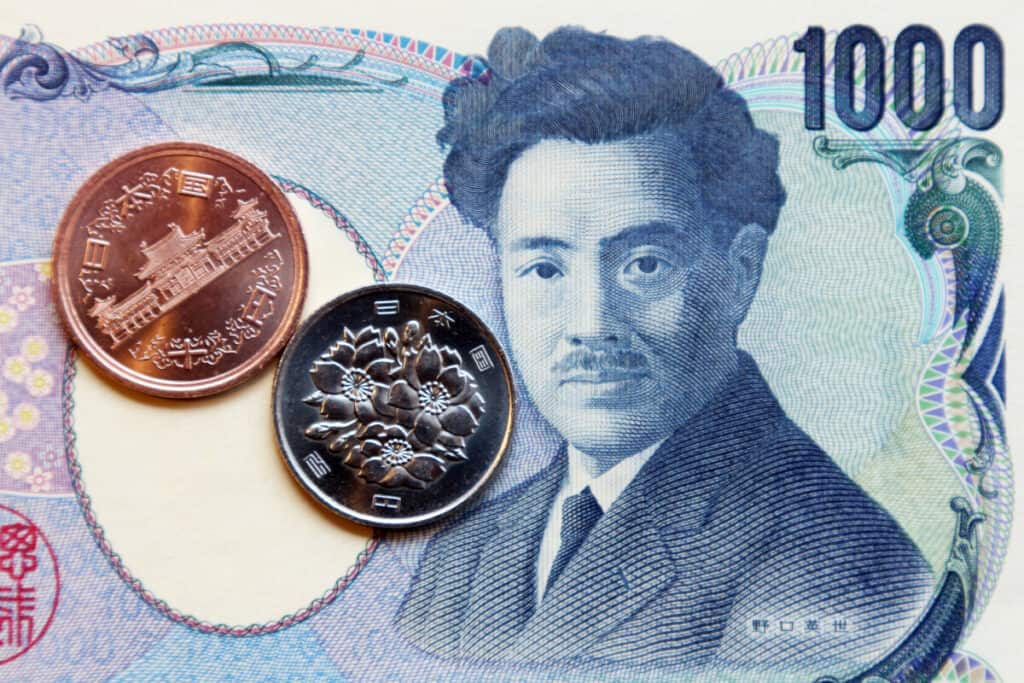
You Must Shower Before Entering The Bath
One thing to keep in mind before visiting a sento is that you are not allowed to wear clothes into the bath, not even a bathing suit. There will be lockers that you can leave your items in, or you can leave them at reception.
You are expected to shower thoroughly before you enter the bath. You should try to remember to bring a small towel and toiletries so you don’t have to buy them.
You are able to wrap yourself in a towel before you make your way to the sento so you don’t have to walk around in the nude.
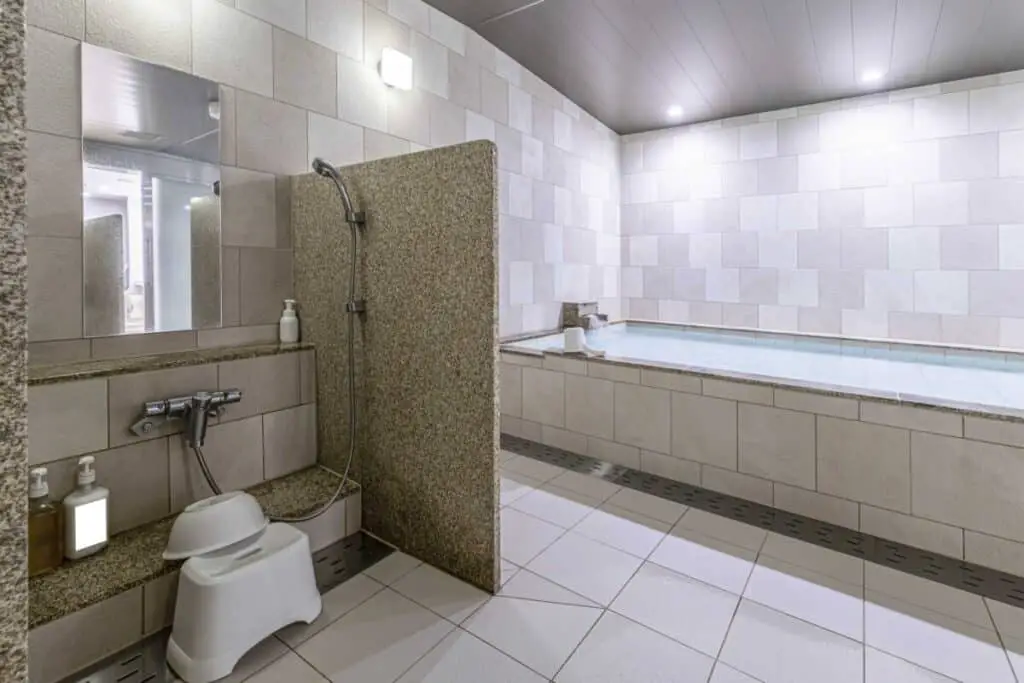
There will usually be a bucket and a stool in the locker room area that will allow you to carry your items into the shower area and have somewhere to sit while washing.
You are expected to return those items when you are finished in the shower area. You should also clean any soap or shampoo residue so it doesn’t create a slipping hazard.
Entering The Sento Bath
Depending on the layout of the sento you visit, there should be a place to put your towel. You will have to make sure that your towel does not touch the water as it’s considered unsanitary.
The baths are deep enough that you will be able to get yourself covered up to your neck easily.
You also want to ensure you tie your hair up or wrap it in a towel so that it doesn’t get in the water either. Even if you have washed it, it’s not considered polite to other patrons to have your hair in the bath.
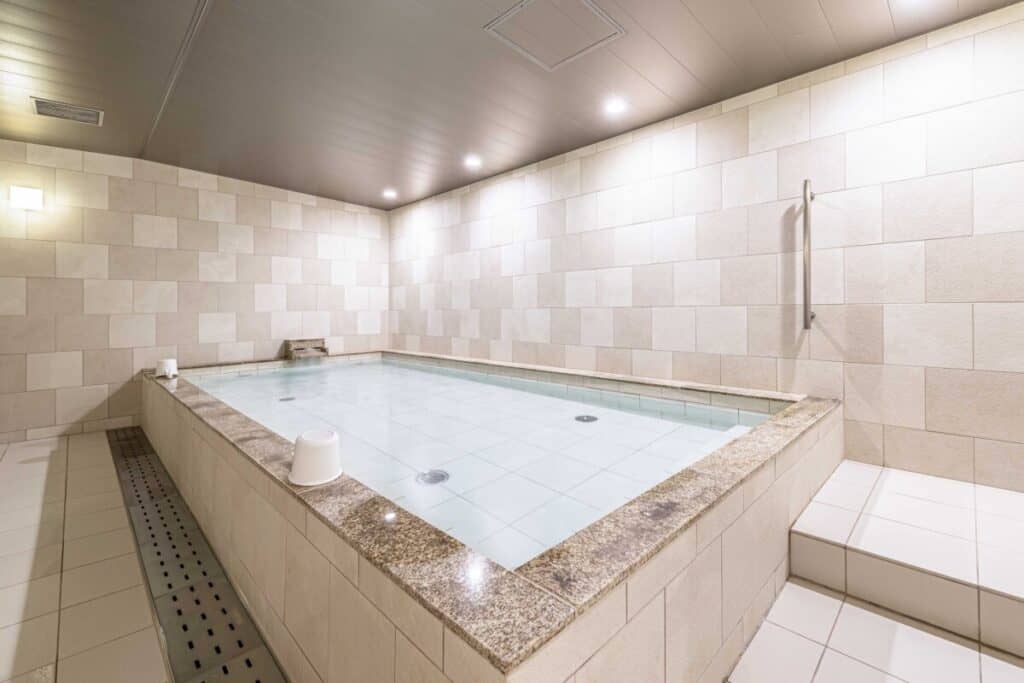
Exiting The Sento Bath
When you are finished enjoying your bath, you will want to dry yourself off before entering the locker room. If you track water into the locker room it could create a slipping hazard that is quite dangerous.
Many sentos will have hair dryers that you can use for free to get your hair dried, so you leave the bath feeling refreshed and rejuvenated, and completely dry.
Sento Etiquette That Is Important To Know
While you won’t find too many sentos, unless they are referred to as super sentos, enacting this rule, some sentos will not want anyone with visible tattoos to enter the bath. It used to be a much more strict rule.
Some sento facilities will also have a sauna for you to enjoy. If you decide you want to use the sauna before or after your bath, you should shower before and after as well. You do not want to go into the sento sweaty.
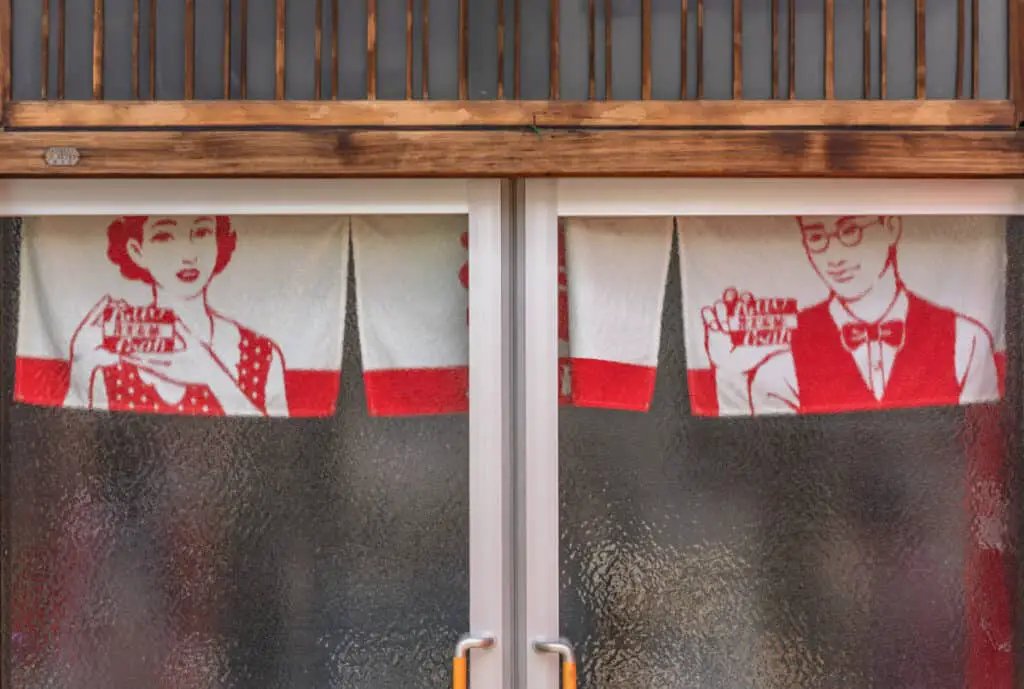
Sentos are not swimming pools, so you should just simply sit and enjoy yourself and take the opportunity to relax. You should not attempt to swim around or jump into the bath. This will be seen as highly disrespectful.
While it should be obvious, you want to ensure you do not stare and are considerate of others and their personal space when in a sento facility.
You should not go to a sento if you cannot be mature or are uncomfortable around nudity.
A Sento Is Different From An Onsen
You might have heard of an onsen, or a hot spring bath, and are wondering how they differ from a sento.
Onsens are filled with water that is directly sourced from a volcanic hot spring.
They also have their own significance in the history of Japan and are an experience to indulge in if you happen to visit an area of Japan that has an onsen.
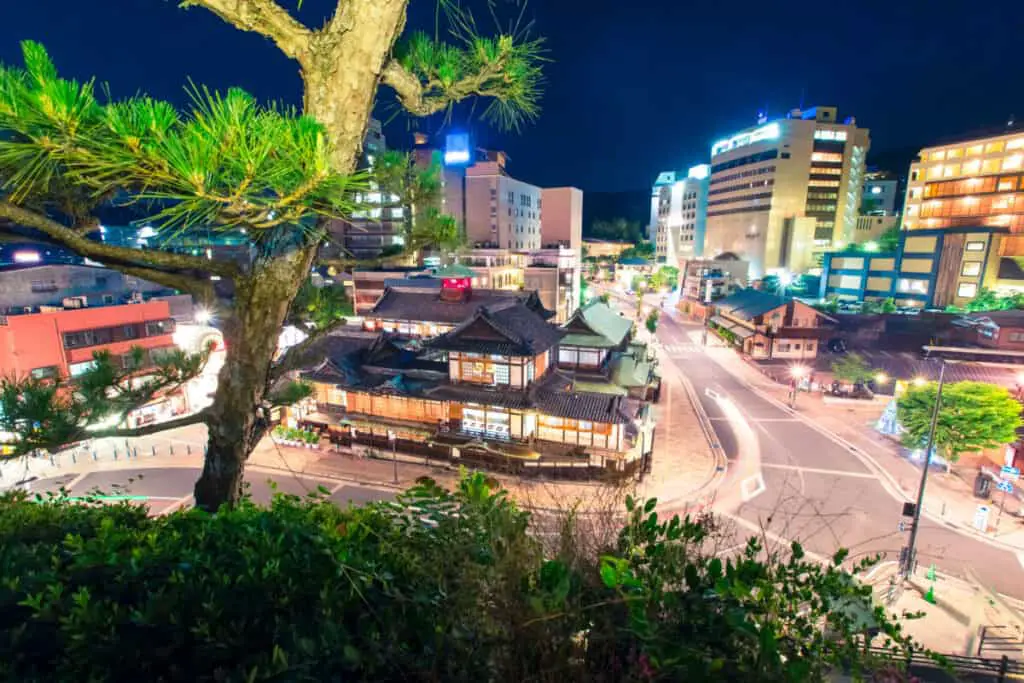
A Sento Is A Place Of Architectural Beauty
You should take the time to admire the architecture of a sento facility, as many of them are pieces of art in and of themselves.
Some will even have breathtaking views of the outdoors or intricately decorated gardens filled with tons of greenery and flowers. Many sentos are designed to emulate the ornate detail that goes into creating shrines.
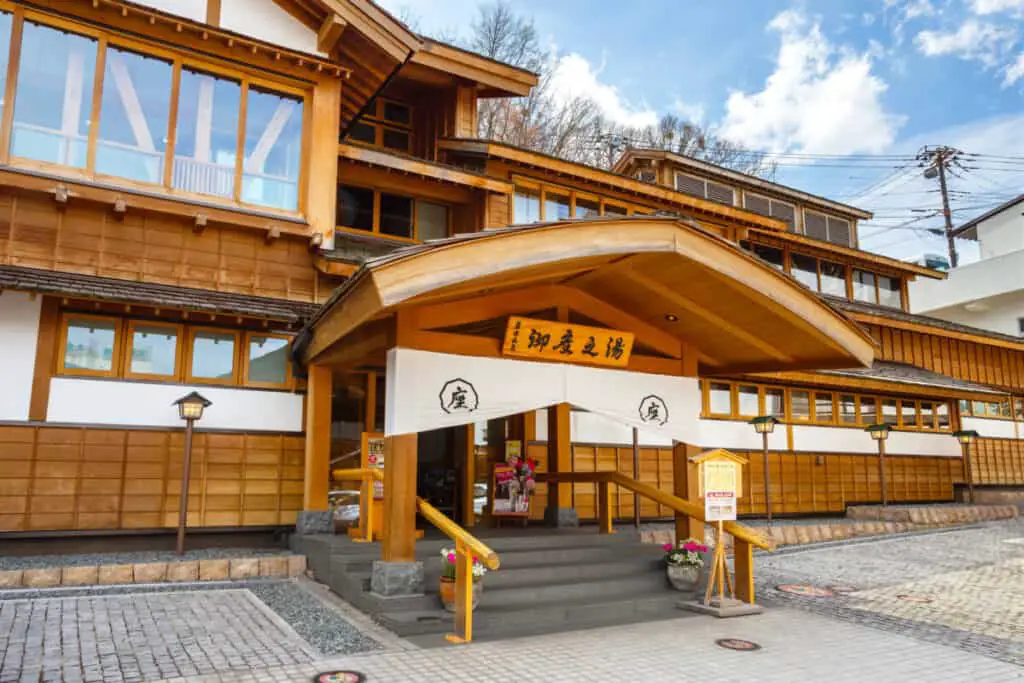
Sometimes there will also be murals and paintings on the walls of a sento facility, many of them depicting Mount Fuji.
Being that Mount Fuji is one of the most sacred places located in Japan, it’s fitting that its image would be in a place of peace and serenity.
Why People Enjoy Sentos
Using a sento on a somewhat regular basis has been touted as an excellent way to maintain the look and feel of the soft and healthy skin.
Many Japanese people who are older will cite a sento as being one of the reasons their skin remains so healthy as they age.
The water in the sento bath is also kept very clean and is very warm. Thus, it can offer some pain and tension relief benefits for those who might be experiencing high levels of stress or live with chronic pain.
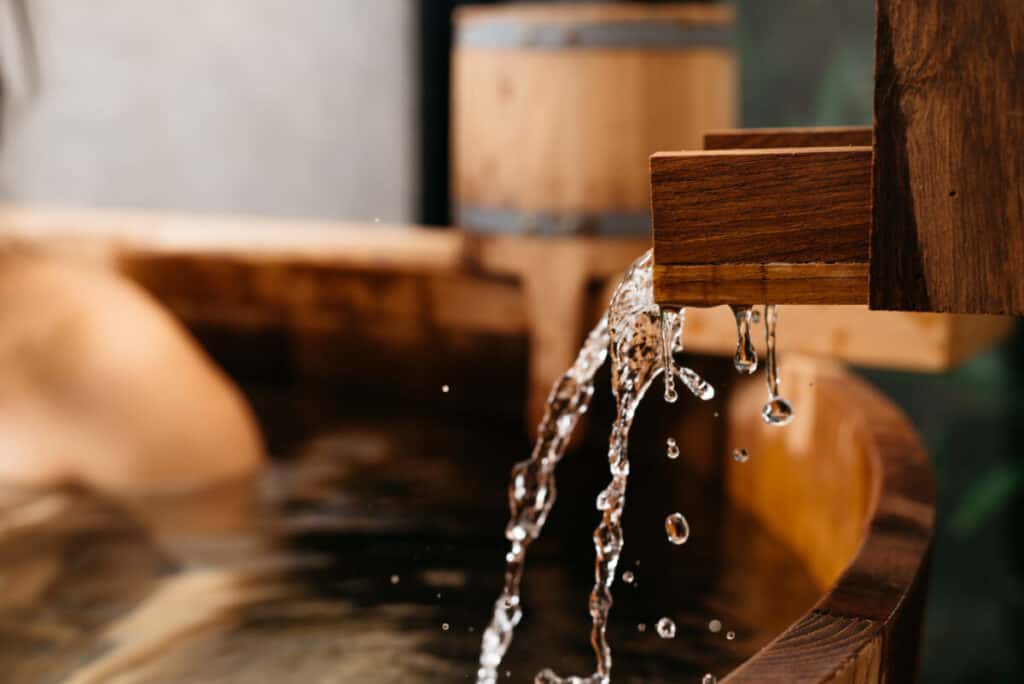
There is also a social and community-enriching aspect to the sento for Japanese people.
You can learn so much about Japanese culture from all different perspectives by speaking with your fellow sento enjoyers.










